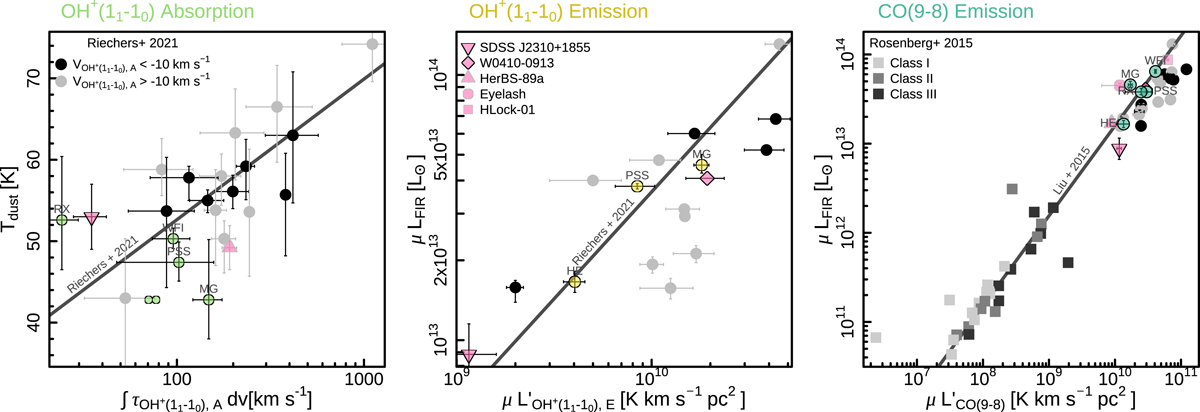Fig. 2.

Download original image
Derived line property trends with host galaxy properties. Left: integrated OH+ optical depth vs. dust temperature. The individual absorption components of MG J0414+0534 are indicated by smaller green points. Middle: OH+ emission line luminosity vs. LFIR. Right: CO(9-8) emission line luminosity vs. LFIR. In this panel, we include the nearby star-forming galaxy sample studied by Rosenberg et al. (2015), categorised into classes of lowest (class I) to highest (class III) CO excitation. We compare our QSO sample with other high-z QSOs (W0410−0913 Stanley et al. 2021 and SDSS J2310+1955 Shao et al. 2022) and DSFGs (HerBS-89a Berta et al. 2021, the Eyelash Indriolo et al. 2018, HLock-01 Scott et al. 2011 and the sample from Riechers et al. 2021) from the literature. In all panels, we colour the sources from Riechers et al. (2021) with blue-shifted OH+ absorption in black and colour the rest of the sample in grey.
Current usage metrics show cumulative count of Article Views (full-text article views including HTML views, PDF and ePub downloads, according to the available data) and Abstracts Views on Vision4Press platform.
Data correspond to usage on the plateform after 2015. The current usage metrics is available 48-96 hours after online publication and is updated daily on week days.
Initial download of the metrics may take a while.


